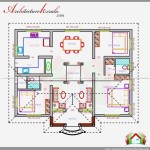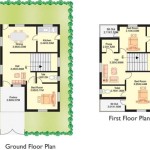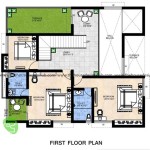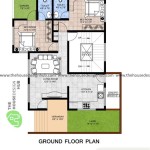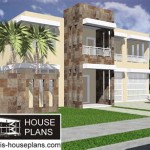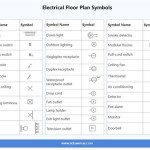Detached Garage Ideas and Plans: Maximizing Space and Functionality
A detached garage provides a wealth of opportunities beyond simple vehicle storage. The physical separation from the main residence offers unique advantages, allowing for dedicated spaces for workshops, studios, or even potential accessory dwelling units (ADUs), subject to local regulations. Planning a detached garage requires careful consideration of several factors, including size, layout, materials, and intended use. This article explores various detached garage ideas and plans, providing a comprehensive guide to designing a functional and aesthetically pleasing structure.
Before embarking on any construction, it is crucial to thoroughly research local zoning ordinances and building codes. These regulations often dictate permissible garage sizes, setbacks from property lines, height restrictions, and requirements for permits. Ignoring these regulations can result in costly delays, fines, or even the need to demolish the structure. Consulting with a local building official or experienced contractor early in the planning process can help ensure compliance and prevent potential issues.
Furthermore, consider the location of the detached garage in relation to the main house and any existing landscaping. Optimizing the garage's placement can improve accessibility, enhance curb appeal, and minimize disruption to existing utilities. Factors such as drainage, sunlight exposure, and prevailing winds should also be taken into account during the site selection process.
Determining the Optimal Size and Layout
The size and layout of a detached garage are primarily dictated by its intended use. A simple garage designed solely for vehicle storage will require less space than a multi-purpose structure intended for workshops, storage, or recreational activities. Standard single-car garages typically measure around 12 feet wide by 20 feet deep, while two-car garages are generally 20 to 24 feet wide and 20 to 24 feet deep. However, these dimensions can be adjusted to accommodate larger vehicles, additional storage needs, or specific equipment.
When planning the layout, consider the placement of doors, windows, and work areas. A strategically positioned overhead door can improve vehicle access and maneuverability. Side doors can provide convenient entry points for accessing tools, equipment, or other stored items. Windows can bring natural light into the garage, reducing the need for artificial lighting and creating a more pleasant working environment. The placement of electrical outlets and lighting fixtures should also be carefully planned to accommodate the intended use of the space.
If the garage is intended for use as a workshop, consider incorporating features such as workbenches, shelving, and tool storage systems. Adequate space should be allocated for each workstation to prevent overcrowding and ensure efficiency. If the garage will be used for storing outdoor equipment, such as lawnmowers, snowblowers, or garden tools, consider including a ramp or wide doorway for easy access.
For homeowners considering converting their detached garage into an ADU, careful planning and adherence to local regulations are essential. ADUs typically require separate entrances, kitchens, and bathrooms, and may be subject to stricter building codes than standard garages. Consulting with an architect or experienced contractor is highly recommended to ensure that the conversion meets all applicable requirements.
The addition of a loft area above the garage can provide valuable storage space or even a small office. Access to the loft can be provided via a staircase or ladder, depending on the available space and intended use. Ensure that the loft is properly insulated and ventilated to create a comfortable environment.
Selecting Materials and Architectural Style
The materials used for the construction of a detached garage can significantly impact its appearance, durability, and cost. Common materials include wood, metal, and concrete blocks. Wood is a versatile and aesthetically pleasing option, but it requires regular maintenance to prevent rot and insect damage. Metal is a durable and low-maintenance option, but it can be less aesthetically appealing than wood. Concrete blocks are a strong and fire-resistant option, but they can be more expensive than wood or metal.
The architectural style of the detached garage should complement the style of the main house. Matching the roofline, siding, and trim can create a cohesive and visually appealing look. Consider incorporating design elements such as dormers, cupolas, or decorative gable ends to enhance the garage's appearance. The choice of garage door can also significantly impact the overall aesthetic. Available options include traditional raised-panel doors, contemporary glass doors, and rustic wood doors.
The foundation of the detached garage is critical to its structural integrity. Common foundation options include concrete slabs, concrete footings with block walls, and gravel pads. The choice of foundation depends on the soil conditions, climate, and the intended use of the garage. A concrete slab is a durable and versatile option that provides a smooth and level surface. Concrete footings with block walls provide a more robust foundation for heavy loads or unstable soil conditions. A gravel pad is a less expensive option that can be suitable for smaller garages or temporary structures.
Proper insulation is essential for maintaining a comfortable temperature inside the detached garage, especially if it is used as a workshop or living space. Insulation can be installed in the walls, roof, and foundation to reduce heat loss in the winter and heat gain in the summer. Common insulation materials include fiberglass batts, spray foam, and rigid foam boards.
Ventilation is also important for preventing moisture buildup and maintaining air quality inside the detached garage. Vents can be installed in the roof, walls, or doors to allow for airflow. A ridge vent along the peak of the roof can provide effective ventilation without requiring electricity. A gable vent installed in each gable end can also provide adequate ventilation. Consider installing a fan to circulate air if the garage is prone to moisture buildup.
Integrating Functionality and Enhancements
Beyond basic storage, a detached garage can be enhanced with various features to improve its functionality and usability. Consider incorporating electrical outlets, lighting fixtures, and plumbing to support a variety of activities. Installing a workbench, shelving, and tool storage systems can transform the garage into a functional workshop. Adding a heating and cooling system can make the space more comfortable year-round.
Adequate lighting is essential for both safety and functionality. Consider installing a combination of overhead lighting, task lighting, and exterior lighting. Overhead lighting can provide general illumination throughout the garage. Task lighting can be used to illuminate specific work areas, such as workbenches or desks. Exterior lighting can improve visibility around the garage and deter intruders.
Electrical outlets should be strategically placed throughout the garage to accommodate power tools, appliances, and other electrical devices. Consider installing both standard 120-volt outlets and 240-volt outlets for high-power equipment. A dedicated electrical panel can provide ample power and prevent overloading circuits.
Plumbing can be added to the detached garage to provide access to water for washing vehicles, cleaning tools, or other activities. A sink can be installed for convenience. A toilet and shower can be added to create a more complete bathroom, especially if the garage is intended for use as an ADU.
Security is an important consideration for any detached garage. Consider installing a security system with motion detectors, door sensors, and security cameras. A well-lit exterior can also deter intruders. Ensure that the garage door is equipped with a secure locking mechanism. A strong and durable door can prevent break-ins.
Landscaping around the detached garage can enhance its appearance and integrate it into the surrounding environment. Consider planting trees, shrubs, and flowers to soften the garage's appearance and create a more inviting space. A paved driveway or walkway can provide easy access to the garage. A well-maintained lawn can complete the look.
Finally, regularly inspect and maintain the detached garage to ensure its longevity and functionality. Check for signs of damage, such as leaks, cracks, or rot. Repair any damage promptly to prevent further deterioration. Clean the garage regularly to remove dirt, dust, and debris. Properly maintain the garage door opener and other mechanical components.

Easy Detached Garage Floor Plans Now

3 Car Detached Garage Plan With Guest Room Bath And Loft 68706vr Architectural Designs House Plans

Garage Plan 76019 2 Car Apartment Craftsman Style

Easy Detached Garage Floor Plans

Hpm Home Plans Plan 763 930 Garage Floor Detached With Loft

Detached Garage Construction 6 Tips For Getting Started Behm Design

Pin By Melissa Greene On Backyard Ideas Garage Apartment Floor Plans With Loft House

Best Contemporary Garage Plans And Modern Detached

Detached 720 Square Foot Garage With Loft 2234sl Architectural Designs House Plans

Detached Garage Plans

